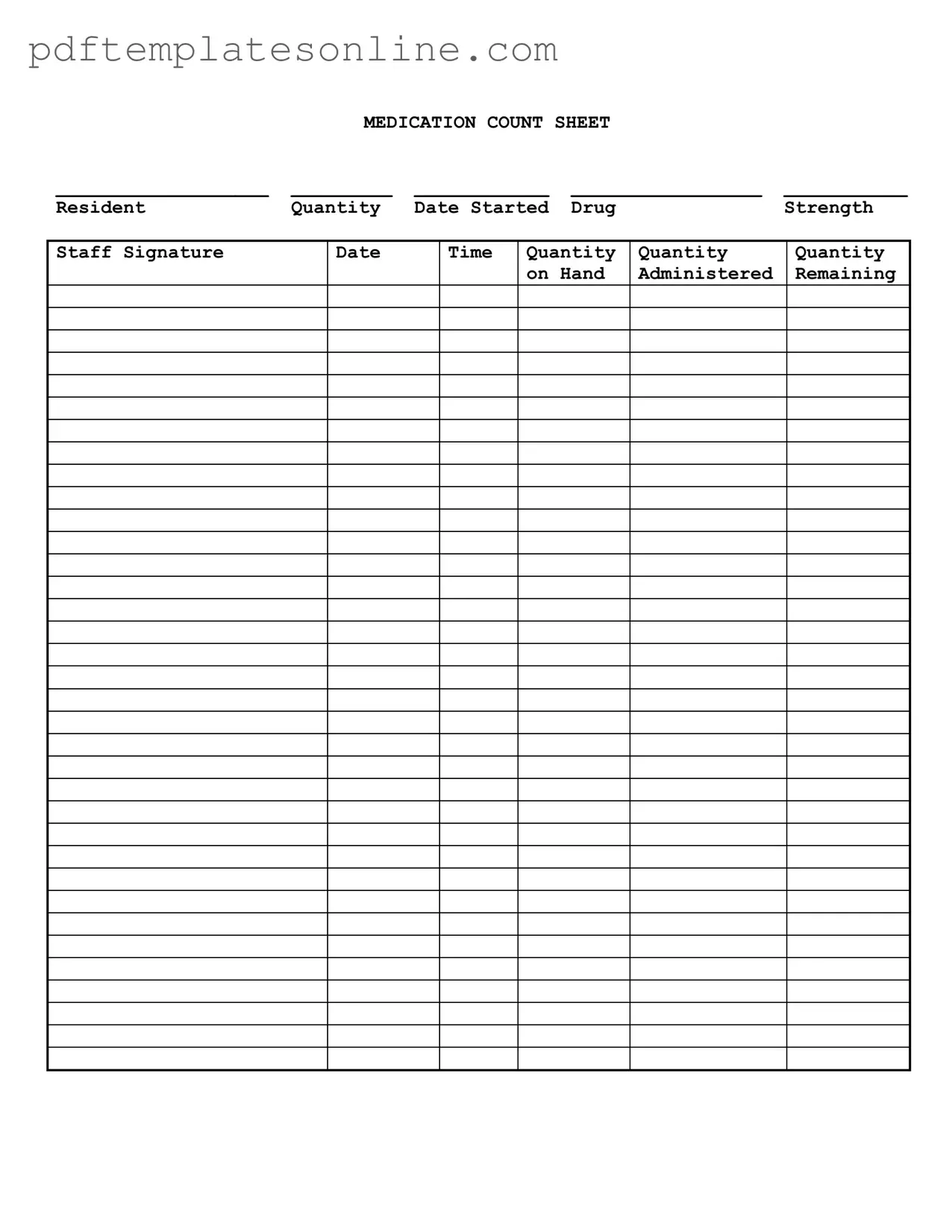Filling out the Medication Count Sheet form accurately is crucial for ensuring proper medication management. However, many people make common mistakes that can lead to serious issues. One frequent error is failing to include the resident's name at the top of the form. Without this essential information, it becomes difficult to track which medications belong to which individual, potentially leading to medication errors.
Another common mistake is neglecting to record the date started for each medication. This detail is important for understanding the duration of treatment and for monitoring any changes in the resident's condition. Omitting this information can create confusion and complicate care decisions.
Some individuals forget to note the drug strength on the form. This is a critical piece of information. If the strength is not documented, it can lead to incorrect dosages being administered. Accurate recording helps ensure that residents receive the correct medication at the appropriate strength.
In addition, people often make errors when entering quantities. For instance, they might miscalculate the amount of medication administered or the remaining quantity on hand. These mistakes can have serious implications for patient safety. Double-checking these numbers before finalizing the form can prevent such errors.
Another oversight is failing to obtain the staff signature. The signature serves as verification that the medication has been administered as documented. Without it, there is no accountability, and this can lead to disputes about whether the medication was given.
Many individuals also overlook the importance of recording the date and time of administration. This information is vital for tracking when medications are given and for ensuring that they are administered on schedule. Missing this detail can disrupt medication regimens and affect patient health.
Some people do not update the form promptly. Delays in recording information can lead to inaccuracies. It is essential to fill out the Medication Count Sheet immediately after administering medication to maintain accurate records.
Another mistake involves using abbreviations or unclear handwriting. This can lead to misunderstandings about medication instructions. Clear, legible writing is essential to ensure that everyone involved in the resident's care understands the information provided.
Lastly, failing to review the completed form before submission can lead to overlooked errors. Taking a moment to double-check the entire form can catch mistakes before they become problematic. Attention to detail in completing the Medication Count Sheet is vital for effective medication management and resident safety.
